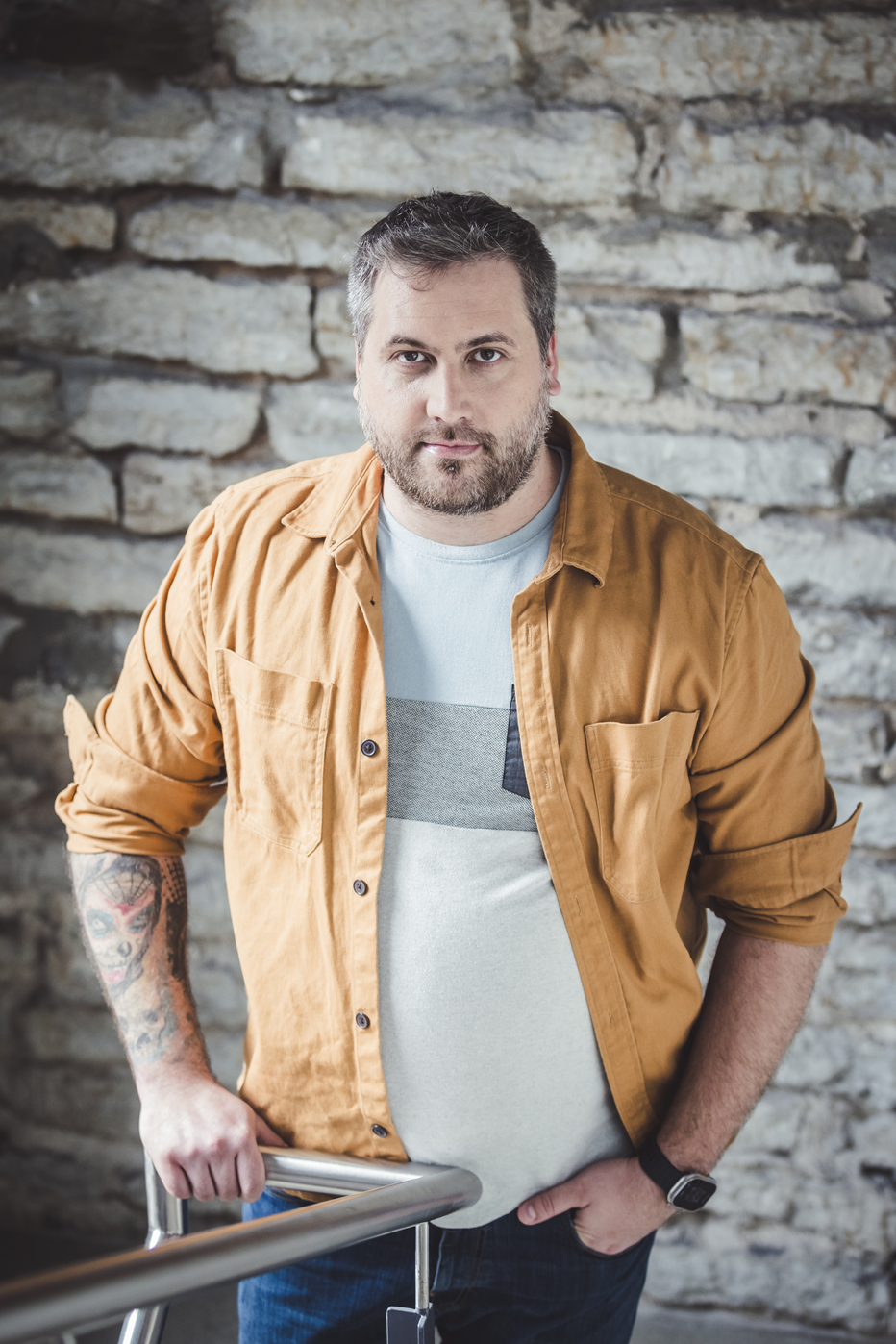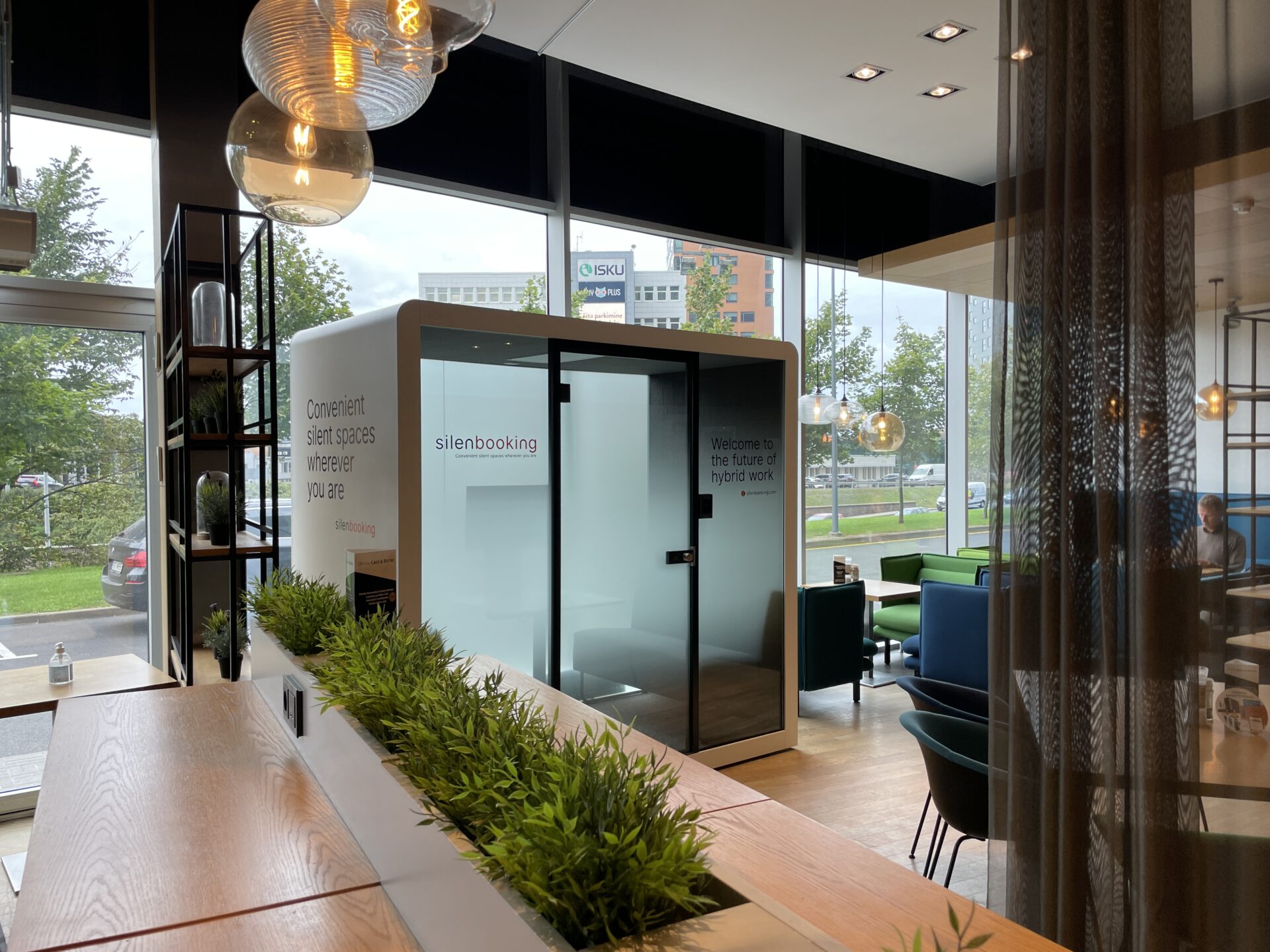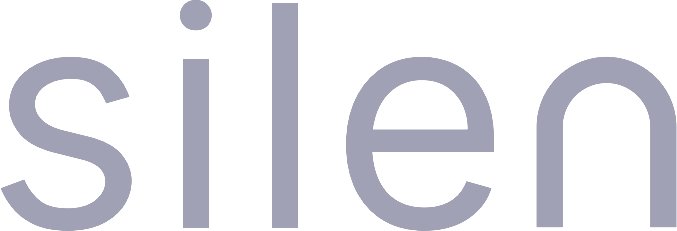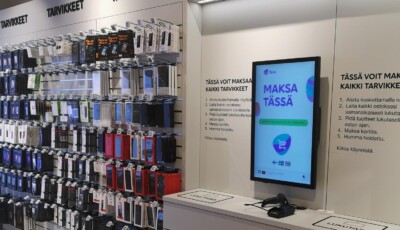One of the services we launched recently was Silenbooking, a web application for renting private workspaces in public venues. Silen, the manufacturer of soundproof booths for open offices, wanted to make their silent workspaces available for everyone needing a private space for focused work or meetings in public locations and chose Helmes as their partner for developing the software of the new service.
In addition to being an innovative service that paves the way towards a future where people can work from where it best suits them, Silenbooking is also an example of excellent service design.
Meet the customer
We create office solutions that allow you to work more effectively. Our Spaces reduce sound like no other, which means that you experience:
20% Less distractions
By moving the noise (or yourself) into the Space, disturbances will be reduced.
40% Better focus
Because regaining your focus after a distraction is difficult.
130% Increased productivity
Because we all work better in silence.
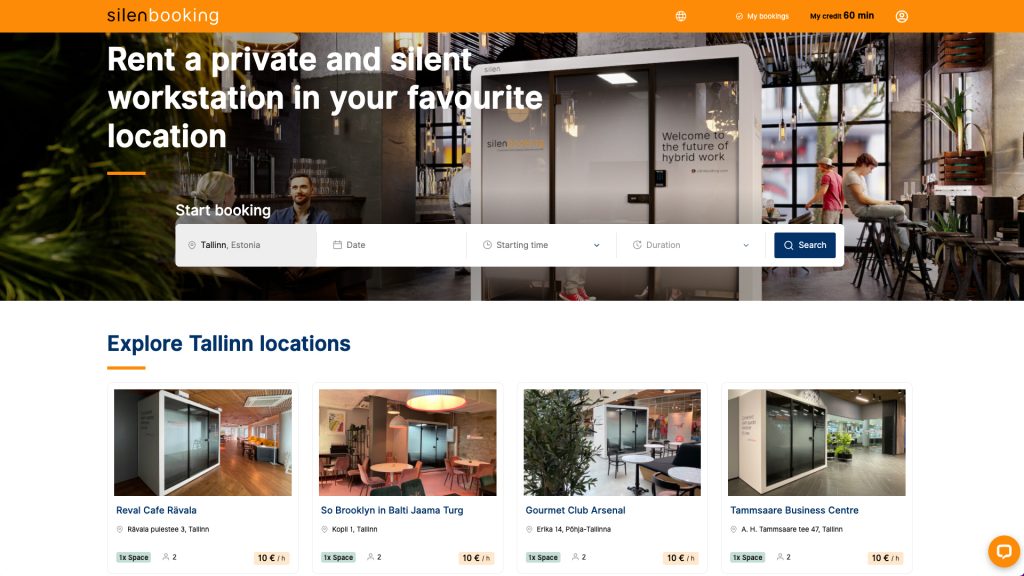
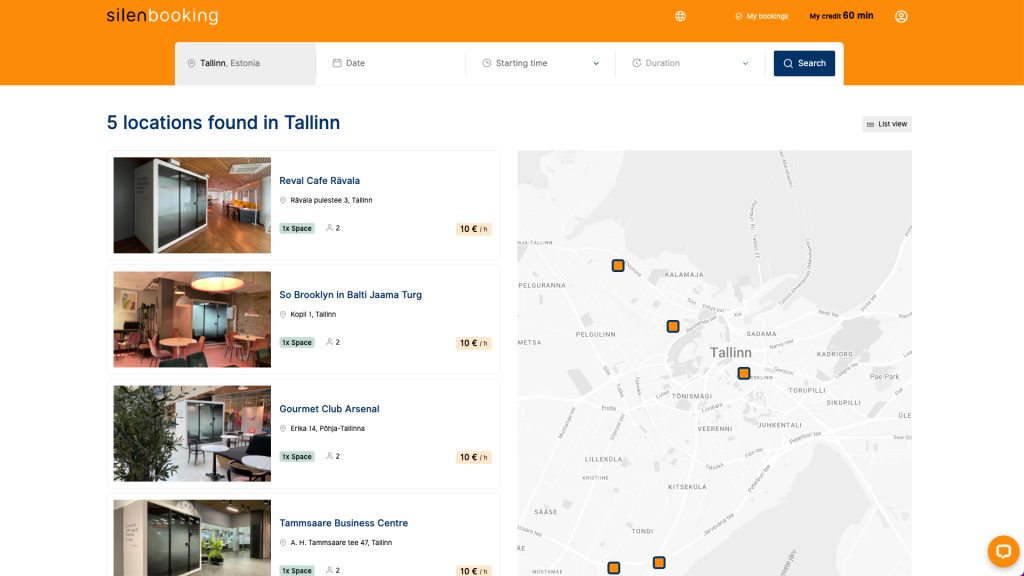
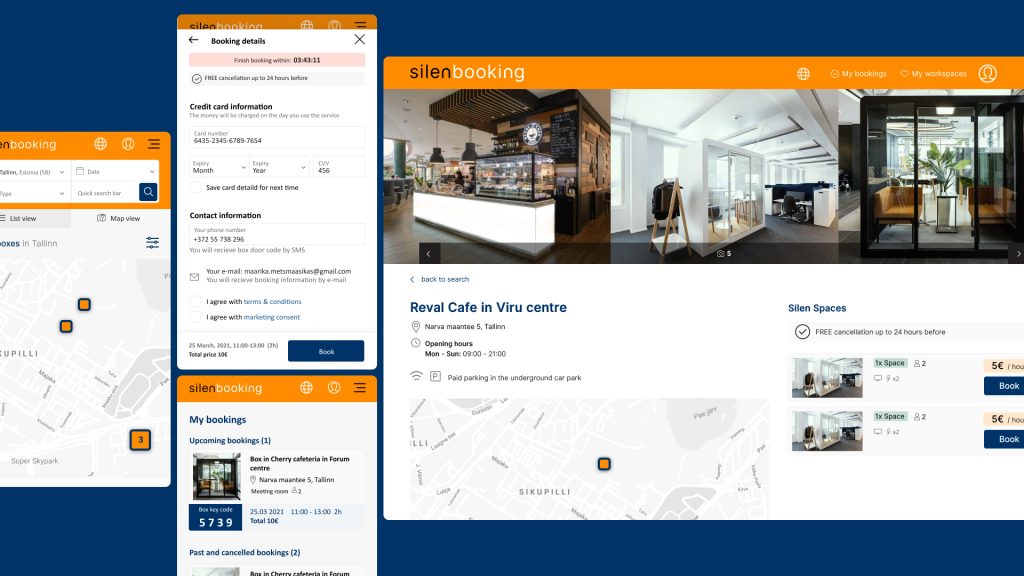
What constitutes excellent design, and how do you achieve it? Team members from Helmes Design and Silen weighed in on the discussion.
Great design is invisible for end-users
It’s a well-known truth that, more than anything else, great design is characterized by its invisibility. A digital service user should never think about how they get from point A to point B but move smoothly and effortlessly to their desired outcome.
Achieving this kind of invisible design is impossible without great teamwork and extensive collaboration with end-users. Here are five principles we followed when developing Silenbooking, which we believe are crucial to making great design choices:
No. 1: Listening to the users
When developing Silenbooking, we picked the brains of existing (and initially, potential) users both before and after launching the MVP through user tests and interviews (the user research process is described more in-depth below). This user feedback allowed us to validate our design choice and prioritize developments.
SEE ALSO: Our 3-step Method for Developing Innovative Spin-off Products
Moreover, we also interviewed venue owners whose premises would accommodate the workspaces even before building the platform, as we wanted to validate our hypotheses against their insights into how the service would fit into their venues. This feedback was extremely useful and allowed us to make crucial changes well before the first line of code was ever written on the screen.
No. 2: Involving a service designer and a UI/UX designer
A typical product development team includes two design-related roles. A service designer conducts user interviews, analyses similar services on the market, and synthesizes information. Typically, they also create initial wireframes for the service. A UI/UX designer takes the input from the service designer and draws up the designs and prototypes for the service. They strive for maximum user-friendliness and may conduct user tests for that purpose.
In the Silenbooking project, the two roles were combined and handled by one person. In addition to the designer, the team included a team lead, analyst, architect, and two developers (in crucial periods, we ramped up the analytics capabilities by recruiting extra people).
We took an agile approach to design, building the prototype piece by piece and validating the results in discussions and check-ins. The work process involved weekly review and design meetings, status meetings between the key persons from Helmes and Silen, regular internal meetings, and ad hoc meetings and test sessions with the whole team.
No. 3: Thinking mobile-first
Many people are using digital services on mobile devices, and the trend will continue in the future. That’s why we took a mobile-first approach to design and technology choices and built Silenbooking as a web service optimized for mobile browsers.
Our goal was that it must be convenient for a person to book the workspace on the go, whether on a busy street or on a phone call with a customer. From creating an account to finalizing a booking, the whole service flow must be easy, intuitive, and fast.
The same logic was behind the decision to keep the frontend and backend separate so that the service could easily be migrated to a native mobile app in the future.
No. 4: Taking the harder route when necessary
Especially when building an MVP, the natural inclination may be towards doing things in the simplest possible way. However, there are certain parts of the service flow where doing just the minimum is not enough and will create a frustrating solution for the user. In that case, the developer should prioritize the user experience and opt for the harder route instead.
For example, we had several options for choosing a time slot in the calendar view when making a booking. We deliberately chose to go the hard way because the simple route would have made booking the workspace more arduous for the user.
No. 5: Supporting the brand identity
While it’s essential to prioritize the user experience, one cannot exclude other goals of great design, such as supporting the client’s brand identity. A great design has the same look and feel as the brand’s communication in other channels. This requires incorporating the client’s visual language: logos, color schemes, fonts, etc. – everything that is included in their CVI manual.
And should the customer’s visual identity change along the way, the design should reflect those changes; that’s what happened in Silenbooking’s case when the company decided to go for a separate brand with Silenbooking service instead of the original Silen brand.
Collaborating with users when launching a new service
When building Silenbooking, we conducted user tests and interviews both before and after launching the service.
As the service was new and didn’t have any signed-up users before going live, we recruited testers from among potential users before the launch. We selected 20 test users from our own company (observing that they’d represent non-technical areas) and divided them into four groups.
Then, we prepared four test cases: two sets of simple tasks the testers would have to complete either on mobile or desktop devices. Each participant completed the tasks individually while commenting on their actions in a voice-aloud manner, with some time reserved for questions later. We categorized and analyzed the feedback after, listing the points raised according to the number of respondents who mentioned them.
In addition to allowing us to validate that the MVP was good to launch, the in-depth user testing gave us valuable input for drawing up the post-MVP roadmap and prioritizing further developments. For example, one of the first features we added was social log-in requested by test users.
After the launch, we started gathering feedback from actual service users and invited each one by e-mail to fill in a survey about their experience after their first completed booking.
In addition, we invited the most active users to in-depth interviews (1 hour) where we asked for feedback both on the service in general and the technical solution and gathered a lot of valuable insights for future development.
Tips on how to conduct user research
- Start talking to users before any line of code is written (you can use wireframes or a test environment)
- If you don’t have existing users, recruit potential users, preferably those who have used similar types of services before
- Aim for 5-7 respondents – this will allow patterns to emerge in their answers
- Use scenarios and ask people to complete certain parts of the user journey while commenting on their actions
- Reward the respondents’ time (for example, we rewarded the volunteers with free credits on the Silenbooking platform).
What has collaborating with Helmes been like? A view from the client’s side
Endrus Arge, CEO, and founder of Silen: “We chose Helmes as our development partner because we wanted a professional service, and I can say we have definitely got it. Helmes has been a wonderfully proactive partner who’s been pushing us when needed, which is something few companies would do – usually it’s the other way around.
Through our collaboration with Helmes, we have learned that you really have to listen to your users. It’s not complicated – you just have to take time for it.
“The feedback on the pilot project has confirmed our thesis that there’s a great demand for private workplaces in public locations. We’ve seen that Silenbooking is an ideal solution for mobile professionals. Think of a real estate agent who can meet their client at a location close to them to sign a contract or companies who can tell their employees to work from whatever place suits them instead of coming to the office.
“The pilot has given us a better feel of the users of the service and the best locations and allowed us to improve both the physical space and software. For instance, we’ve eliminated a few features that were not used and added new functionalities as requested by customers.
“What makes Silenbooking unique in our sector is that there are no other manufacturers who build their own software. This quality gives us a competitive advantage; we can quickly make changes both on the software and hardware side and adjust to the feedback from the market.
“Our next goal is to expand Silenbooking to international locations with the help of our partners and make Silen workspaces available in 10 new cities where we see the greatest demand for them.”
Have an idea for a new service?
Helmes has been developing custom software for customers all over Europe for more than 30 years. Our clients include fast-growing startups, multinational companies in the telecom, fintech, logistics, healthcare, and other sectors and public institutions.
If you are looking for a development partner to help you design a digital service or develop an innovative service from scratch, we’d love to hear from you.
Check out our services or drop us a line.
Get in touch
